-
1 of 253523 objects
Colonnade Egg 1910
Bowenite, four-colour gold, silver-gilt, platinum, guilloché enamel, rose diamonds | 28.0 x 17.0 cm (whole object) | RCIN 40084
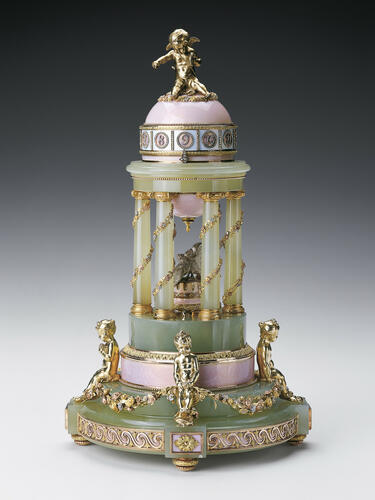
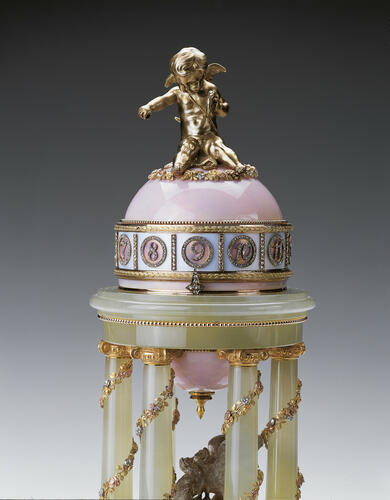
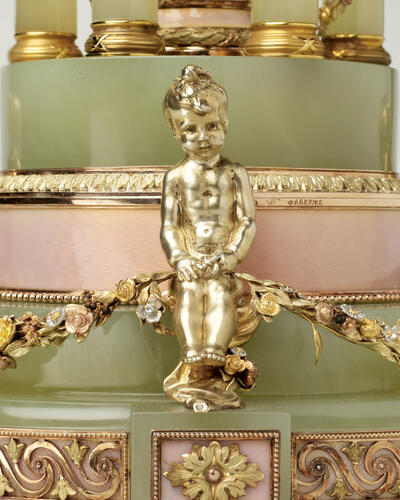
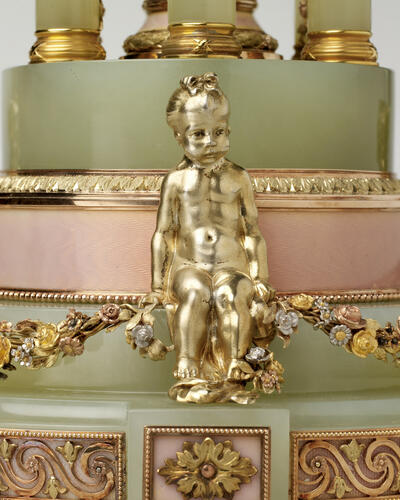
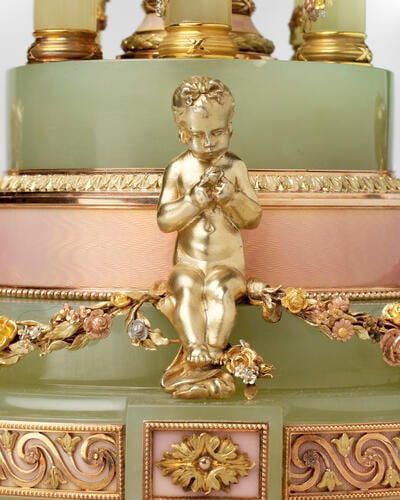
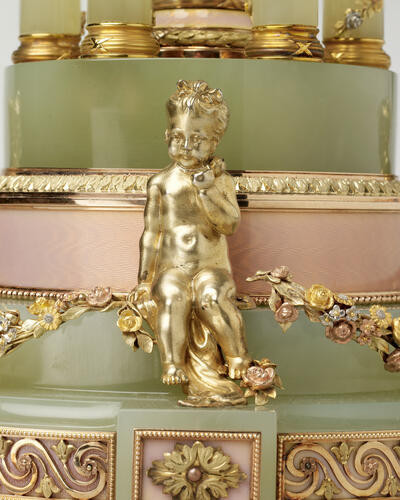
-
Imperial Easter Egg with rotary clock, pink guilloché enamel circle dial with rose diamond numerals, surmounted by silver-gilt cupid, six bowenite columns encircle a pair of platinum doves, the stepped circlular base with four silver-gilt seated female cherubs joined by swags; four bun feet.
This Imperial Easter Egg – which incorporates a rotary clock in its design, the movement supplied to Fabergé by Henry Moser & Cie – is in the form of a classical temple. The colonnade of pale green bowenite columns supports the pink guilloché enamelled egg, surmounted by a cupid. Below a pair of platinum doves sits on a truncated column and around the base four female silver-gilt cherubs hold garlands of roses in red, white, green and yellow gold.
This Easter egg is an allegory of the imperial family in 1910. The enduring love between the Tsar and Tsarina is represented by the pair of doves; their four daughters, Olga (b. 1895), Tatiana (b. 1897), Maria (b. 1899) and Anastasia (b. 1901) – collectively known by their parents as OTMA – are represented by the four cherubs; and the Tsarevich Alexis (b. 1904) is represented by the cupid. Early photographs of the egg and a description of it in a Fabergé album of the Imperial Easter Eggs presented to Tsarina Alexandra Feodorovna between 1907 and 1916 show that the cupid originally held an arrow in his hand to point to the hour.
The egg was the Tsar’s gift to Tsarina Alexandra for Easter 1910 and cost 11,600 roubles. In 1917 it was confiscated from the Anichkov Palace, and in 1922 it was transferred to the Sovnarkom. The dealer Emanuel Snowman brought it to London and, according to a manuscript annotation by Queen Mary in her copy of Bainbridge’s autobiography, Twice Seven, it was acquired by her in 1931 and given to King George V.
Mark of Henrik Wigström; gold mark of 56 zolotniks (1908-17); Fabergé in Cyrillic characters
Catalogue entry from Royal Treasures, A Golden Jubilee Celebration, London 2002Provenance
Commissioned by Tsar Nicholas II for Tsarina Alexandra Feodorovna, Easter 1910; confiscated by the provisional government, 1917; transferred to the Sovnarkom by 1922; ?Emmanuel Snowman; acquired by Queen Mary and given to King George V, 1931
-
Creator(s)
(jeweller)(clockmaker)Acquirer(s)
Commissioner(s)
-
Medium and techniques
Bowenite, four-colour gold, silver-gilt, platinum, guilloché enamel, rose diamonds
gold, pink enamel, white enamel, bowenite, red gold, yellow gold, diamond, green gold, white gold, platinumMeasurements
28.0 x 17.0 cm (whole object)
Alternative title(s)
Colonnade Egg Clock
Place of Production
St Petersburg [Russia]